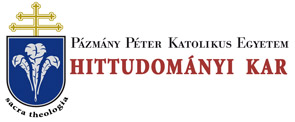Folia Theologica 16. (2005)
Pál Bolberitz: The Beginnings of Hungarian Philosphy (The Reception of Nicholas of Cusa in the work of "De homine" by Peter Monedulatus Csokas Laskoi)
THE BEGINNINGS OF HUNGARIAN PHILOSOPHY 15 pean humanist education. As preceptor for distinguished Hungarian (Transylvanian) noble families, he reached Italy, Basel, Germany. His book "De homine" was published there, too, where earlier he studied theology, in the town of Luther, in Wittenberg. Hereby a question may be raised, namely, for what reason a Calvinist pastor and theologist, first the tutor and director for the school of Marosvasarhely, then the Calvinist school of Fogaras studied and published in the Gospels' Rome? The topic shall require another study. I am passing hereby only the remark that even in Wittenberg, just among the Hungarian students, were a few, being to follow first Malenchton, then the Calvinist trend, and presumably Peter Csókás Laskoi had been joining the Calvinist Reformation22 in the very beginning of his studies in Wittenberg. Another - remarkable - curiosity, that Laskoi in the extended introduction of title page is missing), and in the libraries of the Presbyterian colleges in Sárospatak and Debrecen. The bibliography of the oeuvre of Laskoi: J. ERDÉLYI, A hazai bölcsészet történelméhez (To the History of the Hungarian Philosophy, Sárospataki Füzetek 1857/58. 50-63, és Tardy, Ludovico: Aspetti della fortuna di Pico nella cultura ungherese. Petrus Monedulatus Lacovius. In: L’ opera e il pensiero di Giovanni Pico della Mirandola nella storia dell’ umanesinio, Vol. 2. Firenze, 1965. 399-403. (N. B. Lajos Tarday first wrote about the reception of Pico della Mirandola in Laskai ’s book of „De homine”) Earlier K. SZILY, The Chair’s opening speech [Peter Csókás Laskai was first a chief contributor to the Hungarian part of Calepinus Dictionary], Magyar Nyelv (Hungarian Language), 1913. p. 49-57. 22 The Hungarian students studying in Wittenberg were bond for Melanchton, because he-showing tolerance towards the Hungarian students’ insufficient knowledge of German, had lectures to them in Latin (which were understood by them). Many ethusiasts of Kálvin visited Wittenberg and in a shortwhile the Calvinist school was adopted by the Hungarian. The reason for his popularity was probably that the Calvinist theory of predestination promoted the interpretation of the fatal consequences of the battle at Mohács (the Turkish victory and the Turkish occupation of the central part of Hungary), influencing the fate of Hungary. The Lutheran school had been losing its importance by extending the general hostility against the Habsburgs, which culminated in the end of the 15th century in the revolt led by Bocskai against the Flabsburgs. In that time the question appeared whether the dependant may rebel against his legal ruler, or not? According to the Lutheran school it is not allowed, while the Calvinists - referring to certain texts of the Old Testament - considered it permitted. This way the „ideological” establishment of the revolt seemed to be provided. From this time in Hungary it became widespread that Calvinism is a Hungarian religion, while Lutheranism is a German religion, and Catholicism can be regarded as the manifestation of the loyalty towards the Flabsburgs.
